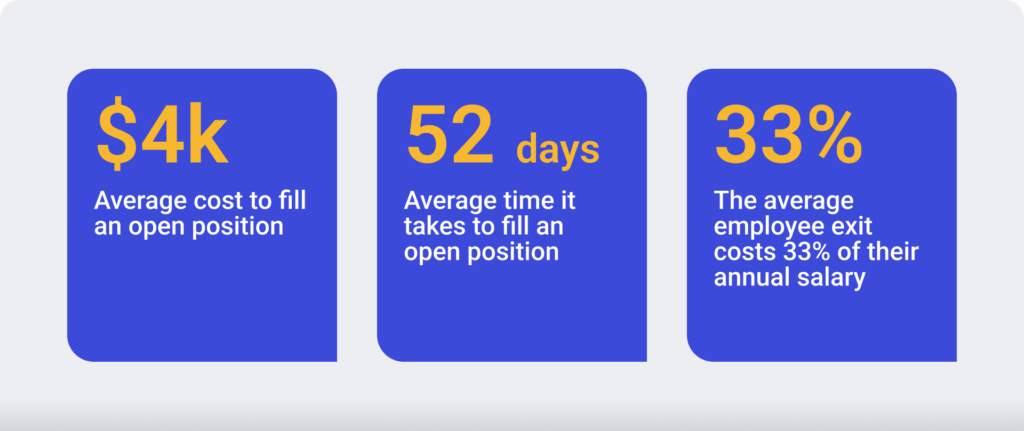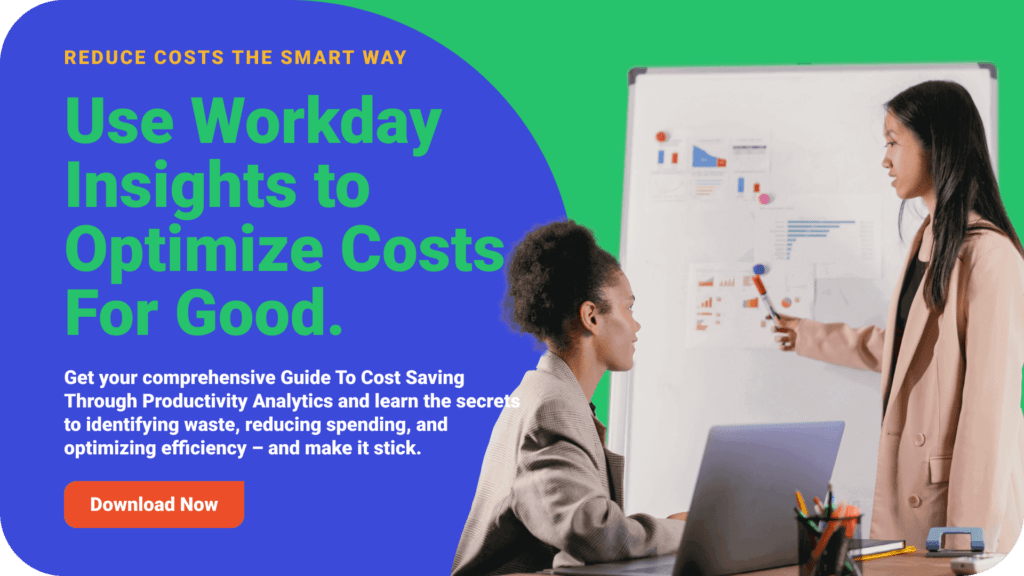Retaining good employees should be a key effort for all organizations. Replacing employees is costly. Searching for new talent requires significant internal time, not to mention the cost of placing job ads, paying job board fees and engaging recruiters. Then there are the costs associated with onboarding and training.
Organizations battling employee churn also suffer from a loss of institutional knowledge, lower team morale and reduced productivity.

Changing perceptions: Using workday insights to improve employee wellbeing
Burnout is rife. Less than one-quarter of employees globally (23%) are actively engaged at work, leaving a lot of room to improve.
Overloaded schedules, role ambiguity, inadequate supervision, lack of support and poor working hours are among the biggest organizational factors contributing to burnout. These are all factors that can be measured, monitored and improved using organizational data.
Time Doctor has purpose-built wellbeing features that track the signs of burnout.
- Overtime hours
- Productive time trends
- Weekend work
- Task completion rate
- Absenteeism reports

We’ve worked with hundreds of clients in dozens of industries to ensure Time Doctor is a tool for collaboration and productivity, not chastising and penalizing. Our work-life balance widget is a crucial tool to help managers catch the signs of burnout early and support employees’ wellbeing.

Is remote work good for productivity?
85% of leaders say the shift to hybrid work has made it challenging to have confidence that employees are productive.
87% of employees say they are productive at work.
The move towards remote and hybrid work is global and permanent. That’s good news, considering that 6 in 10 employers save money with a remote workforce.
But it’s also a move that could encourage micromanagement and stress in organizations that haven’t adapted to modern ways of working. The problem isn’t that people are less productive outside the traditional office. Big names like BestBuy, American Express, Dow Chemical and AT&T report teleworkers are 25% to 43% more productive than in-office teams, with cost-saving benefits like shedding multi-million-dollar real estate encumbrances.
Time Doctor users Executive Mosaic did all that and more, using workday insights to:
- Transition its 90-person team to 100% remote working
- Broaden its hiring horizons to attract the best talent, regardless of location
- Save tens of thousands of dollars by closing its corporate HQ
- Give its employees 2+ hours back every day by eliminating the commute
Many remote and hybrid organizations are thriving, but what Microsoft calls “productivity paranoia” is holding others back. Managers need to get on board with remote and asynchronous work. Employees want it, technology enables it, and data supports the benefits of doing it.
But there’s still hesitation to change. Until managers invest in establishing a reliable workday insights solution, they won’t believe the benefits apply to their organization.
In other words, productivity analytics is the safety net underneath a leap of faith.
Embracing the future of work with confidence
The evolving workplace dynamics emphasize the importance of employee wellbeing and remote work adaptation. Companies that prioritize their workforce’s mental health and harness the power of tools like Time Doctor can not only identify potential burnout but also maximize overall productivity. The rise in remote and hybrid work underscores the need for modern managerial approaches that prioritize trust and results over physical presence.
Notably, the transformation to remote and hybrid models has illuminated the significant advantages in terms of cost-saving, efficiency, and broader talent pools. Yet, the change is not without its challenges. “Productivity paranoia” remains a barrier for many organizations, which, if unaddressed, can inhibit growth and adaptability in the new work era.
As the workplace continues to evolve, it’s imperative for leaders to recognize and act upon the data supporting remote work benefits. By leveraging productivity analytics and workday insights, managers can make more informed decisions, ensuring their teams are not only productive but also well-supported and engaged. After all, the future of work demands a blend of trust, flexibility, and actionable insights — a formula that promises success in a world that’s always changing.

Carlo Borja is the Content Marketing Manager of Time Doctor, a workforce analytics software for distributed teams. He is a remote work advocate, a father and a coffee junkie.


